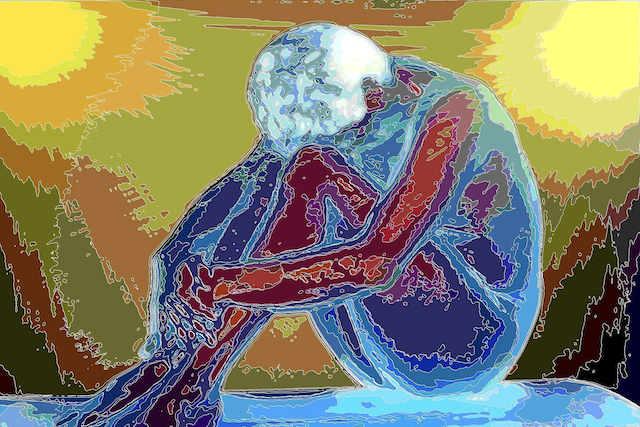Rain Meditation: The Mindfulness Tool That Cultivates Self Compassion And Acceptance
The post Rain Meditation: The Mindfulness Tool That Cultivates Self Compassion And Acceptance appeared first on The Yoga Nomads.

If you’ve been practicing mindfulness for a while, you may have come across the meditation technique RAIN. Rain meditation is a practice of radical compassion, helping you cultivate self-love and self-compassion to awaken to your highest power.
Rain is a powerful healing practice that can help you let go of pain and suffering to experience more inner peace and freedom. However, as it can bring up difficult emotions, it’s best to gain a deeper understanding of the technique before trying it.
This article will break down the acronym rain and explain how to practice it so that you can detach from old habits and cultivate a happier life.
What is Rain meditation?

RAIN is a form of mindfulness meditation that consists of four specific steps. Like other forms of meditation, the purpose of RAIN is to cultivate a state of heightened awareness by focusing on the present moment. However, what makes RAIN unique is that it encourages you to be compassionate towards yourself, particularly the negative emotions and thoughts you are experiencing.
Meditation teacher Michele McDonald created the meditation practice around 20 years ago. Since then, several psychologists have taught and adapted the technique. However, the famous psychologist and author Tara Brach made rain meditation well known in the spiritual and personal growth world.
According to Michele McDonald, the acronym rain stands for ‘recognition, acceptance, investigation, and non-identification. However, Tara Brach teaches the acronym rain as ‘Recognize, Allow, Investigate, Nurture.’
R – Recognize
The first step of rain is to recognize what you are feeling at the present moment, physically, mentally, and emotionally. It is like a check-in with yourself to see what comes up. This step is crucial as we often suppress uncomfortable feelings by making ourselves busy, distracting ourselves with unhealthy habits or behaviors, or avoiding facing certain things.
The more we push away how we feel, the more we become at war with ourselves. This deepens our self-judgment and self-aversion, so we constantly put ourselves down and speak poorly of ourselves, creating self-hate.
Sitting down and cultivating stillness in our body allows any suppressed difficult emotions to arise. As they do, all you need to do is mentally note what the feeling is that you are experiencing. For example, you might observe anxiety and disappointment.
While recognizing our feelings can be very uncomfortable, it can also be empowering. The more awareness we gain of ourselves, the closer we move towards self-compassion and acceptance.
A – Allow
Once we recognize how we are feeling, the next step is to let the emotions be there. This can be the most uncomfortable part of RAIN. It involves resisting the urge to stop the practice or enter a spiral of judgment where we blame ourselves or others for feeling the way we do.
For example, perhaps we recognize a feeling of sadness regarding a past event. We might focus on the person involved in that event and blame them for making us feel this way. However, in RAIN, we should simply allow the emotion to be there without determining whose fault it is.
Another tendency we may have when an emotion arises, particularly stress, is the urge to quickly solve the problem, so we no longer feel this way. However, this is counterproductive to the healing process, so we should try to resist the desire to do anything about the emotion we are experiencing.
The space we create through allowing helps us to discover more profound parts of ourselves, which is integral to personal and spiritual growth.
I – Investigate
The third step, investigation, is about creating curiosity about our feelings. This involves mentally asking questions like, “how does this emotion make my body feel?” or “how is my mind being affected by my emotional state?”. It’s about exploring further how a complex emotion affects us on all levels rather than obsessively thinking about why you feel the way you do.
Another good self-reflection question is, “What does this feeling want from me?”. Sometimes emotions arise because we are neglecting something that needs our attention. This could be a physical injury or illness. Thus, the feeling could be telling you to address that issue. Alternatively, the emotion may need something from you to pass, such as self-compassion, acceptance, or forgiveness.
N – Nurture
Once you determine what the challenging emotion needs, the final step is to give it that nourishment. Nurture the distressed part of you, whether it’s your heart, soul, mind, or an injured limb. This step will help you learn to be kind to yourself and develop more self-compassion. It also gives you the opportunity to mother yourself in a way that perhaps you were not mothered as a child.
Benefits of practicing rain meditation
RAIN meditation does more than just increase our natural awareness and presence. It is a helpful tool for navigating the most difficult emotions and situations that come up in life. By practicing rain meditations, you can:
Overcome grief and depression as the technique helps you process feelings and thus, heal from emotional pain.Deal with anxiety as you can better identify thoughts coming from fears.Cultivate more self-compassion and self-love, enabling you to take better care of yourself and nurture your body and mind.Gain more self-acceptance and confidence to move forward and achieve your goals.Become less judgemental of yourself and others.Communicate better with others as you learn how to better communicate with yourself.Develop mindfulness in everyday life and progress deeper in your meditation/spiritual journey.How to practice rain meditation

Rain is typically practiced as a stand-alone meditation rather than as part of another type of meditation practice. The acronym makes RAIN an easy-to-remember tool, so you can do it independently once you learn the process.
However, we recommend following the RAIN guided meditation with Tara Brach at least the first few times. You can download this 20-minute guided meditation onto your phone or audio player to access the healing guided practice whenever necessary.
Before practicing RAIN, create a quiet and comfortable environment where you will not be disturbed and can become vulnerable. It is best to do it in a room where there is no one else (unless you are practicing together with a loved one).
Like all meditations, take a few minutes to center yourself and connect to your breath. Take a few full, deep breaths, and then focus on your natural breathing rate until you feel your mind starts to settle.Think of a challenging situation that is going on in your life right now. It could be about your health, work life, a relationship, or something else. Tara Brach suggests picking something with a “charge reaction” that triggers you but not something that feels overwhelming, like a traumatic event.Now visualize in your mind the specific trigger regarding this situation. For example, if you are having trouble with your partner, maybe you determine that you feel most emotionally activated when your partner says something in particular.Once you have the trigger, begin the first stage of RAIN by recognizing what emotion or feeling is the most predominant when you think of this trigger.Once you identify the emotion, allow it to be there.Investigate the most challenging part of this emotion. Ask yourself what you believe about the situation and what is asking for the most attention from you.Based on your investigation, nurture yourself in whatever way your body needs right now. You can send love and compassion to yourself by bringing a hand to your heart or belly and holding it there until the vulnerable place feels more tender.Finally, take a few moments to rest in the presence created. Notice any differences in your emotional state now compared to before the meditation.What to do when challenging feelings arise

Use the Drop Of Rain technique
A key concept of RAIN is to allow uncomfortable and painful emotions to come up and not push them away. Michelle McDonald recently expanded on her RAIN acronym, introducing DROP.
While rain focuses on allowing and dealing with negative and uncomfortable feelings. DROP is about other thoughts or feelings that get in the way and stop us from being present when we do the rain practice.
DROP stands for Delusion/Distraction, Resistance, Obliviousness, and Personalisation. Let’s explore this new acronym in more detail.
D – Distraction
It is common to become distracted during the first step of RAIN. You may be trying to recognize how you feel, but your mind keeps wandering to thoughts of what you need to get done or what happened yesterday.
If you come up against distraction when you sit down to practice rain, acknowledge that distraction is normal in meditation and part of the process of calming the mind. The breath serves as an anchor to the present moment, so whenever you notice your mind wandering, redirect your attention to your breath for a few moments.
R – Resistance
Resistance most commonly comes up during the second stage of rain. Some difficult emotions like anxiety or anger can be tough to accept and allow because you do not think you should feel that way. If you feel resistance arise, notice this and push through it.
O – Obliviousness
Obliviousness happens when we pretend emotions are not there or try to hide or ignore them. For example, when you are in the third stage of rain, your mind might tell you that the emotion is not there anymore when in reality, you are trying to sweep it under the carpet. Be cautious that you do not do this as it just causes deeper set stress and suffering.
P – Personalisation
Personalization is about not taking your emotions personally. Sometimes we identify with an emotion as ‘our’ feeling. However, this self-identification just heightens the emotional energy. So whenever you feel anger, do not refer to it as ‘your anger.’ Non-identification means looking at things in an impersonal way, separating them entirely from yourself.
Final thoughts on Rain meditation practice
Sometimes our emotions can consume us, leaving us in the space of suffering and pain. Rain guided meditations help us weave through this dense forest of feelings, creating a sense of inner calm. So whether you’re dealing with feelings of fear, grief, or sadness, explore RAIN meditations and experience deeper awareness, compassion, and freedom.

 JimMin
JimMin 
































